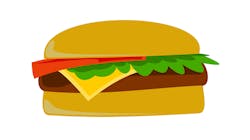With Hope for Recovery on Horizon, U.S. Restaurant Industry Ends 2020 Making Its Way Out of Steep Declines
The convenience foodservice industry often pays attention to trends in the restaurant sector. NPD Groups latest restaurant study points out that consumers prize convenience, quality and experience, and operators meeting these expectations will do well in good or bad times.
The U.S. restaurant industry closed one of the most unpopular years in history moving its way out of the steepest declines the industry has experienced since the Great Recession, reports The NPD Group. Customer transaction declines at major restaurant chains in December were down -10% compared to same period year ago, a 27-point improvement from April, the height of the shelter-at-home and restaurant dine-in closure mandates, when transactions declined by -37% from a year ago, according to NPD’s CREST® Performance Alerts, which provides a rapid weekly view of chain-specific transactions and share trends for 75 quick service, fast casual, midscale, and casual dining chains representing 54% of the commercial restaurant traffic in U.S.
Full-service restaurant chains, which primarily rely on dine-in customers and had few if any off-premises services when the dine-in restrictions went into effect, bore the brunt of the transaction declines throughout the pandemic. In April, the segment’s customer transactions declined by -70% compared to year ago, and improved its declines to -30% in December. Many full service restaurant chains quickly pivoted to offer more off-premises services by turning parking lots into drive-thru stations, offering curbside pick-up, and enhancing delivery options. For full service restaurants now, it’s about government restrictions. In more restrictive states full service restaurant chain transactions are down -60% to -70%. In less restrictive states, there isn’t as much of a gap between quick service and full service restaurants.
Major quick service restaurant chains, which represent the bulk of restaurant industry transactions, learned to expand their already high capacity for off-premises volumes. The chains’ carry-out, drive-thru and delivery orders soared throughout the pandemic as consumers looked for relief from preparing most of their meals at home. Quick service customer transaction declines bottomed out in April with a decline of -35% versus year ago, but quickly improved as shelter-at-home orders were lifted. In December, quick service restaurant chain customer transaction declines were down -8% versus last year.
“The struggles of the restaurant industry are well documented and we acknowledge that some operators have not survived the pandemic,” David Portalatin, NPD food industry advisor and author of Eating Patterns in America. “But history has shown that consumers will always value the convenience, quality, and experience of restaurant meals, and the operators that deliver against these expectations have proven it’s a winning formula in good or bad times. Our industry is resilient and consumer demand for restaurants remains strong.”
About The NPD Group, Inc.
NPD offers data, industry expertise, and prescriptive analytics to help our clients grow their businesses in a changing world. Over 2,000 companies worldwide rely on us to help them measure, predict, and improve performance across all channels, including brick-and-mortar and e-commerce. We have offices in 27 cities worldwide, with operations spanning the Americas, Europe, and APAC. Practice areas include apparel, appliances, automotive, beauty, books, B2B technology, consumer technology, e-commerce, fashion accessories, food consumption, foodservice, footwear, home, juvenile products, media entertainment, mobile, office supplies, retail, sports, toys, and video games. For more information, visit npd.com.
